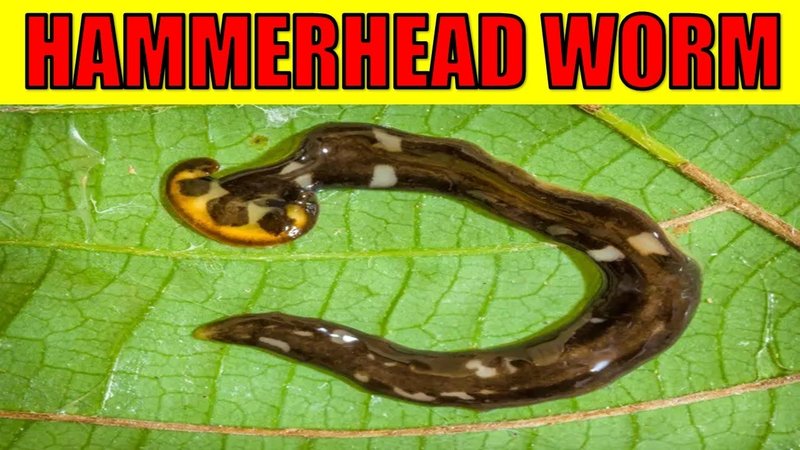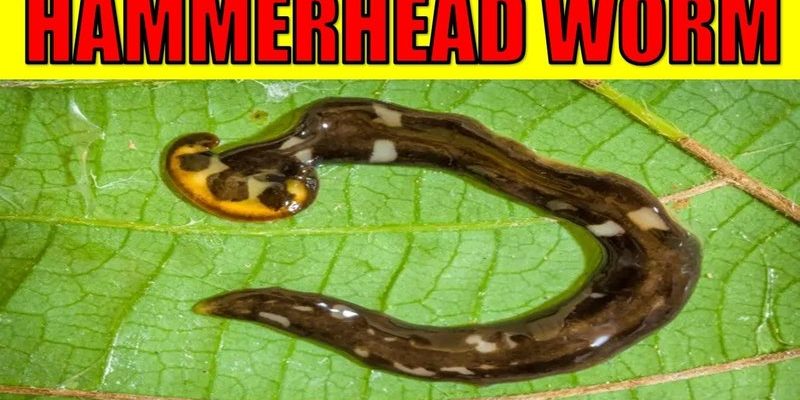
Regeneration in hammerhead worms isn’t just a party trick. It’s a crucial part of their survival. Think of it like a safety net; if they get hurt, they can heal themselves and continue living their lives. Let’s dive deeper into how this regeneration works, why it matters, and what it reveals about these unique creatures.
What Are Hammerhead Worms?
To really understand the regeneration abilities of hammerhead worms, we should first get to know them a bit better. These worms belong to the phylum Platyhelminthes, which includes flatworms. They are usually found in tropical and subtropical regions, lurking in damp soil or leaf litter. Their distinct hammer-shaped heads are not just for show; they help with sensing their environment, kind of like a radar system.
Hammerhead worms can grow quite large, reaching lengths of up to 30 centimeters (about a foot). Their bodies are flat and soft, which is typical for flatworms. These little guys are also carnivorous, mostly feeding on earthworms and other small invertebrates. So, if you’re thinking of getting one as a pet, you might need to rethink your worm-keeping strategy!
How Does Regeneration Work?
Now, let’s get to the heart of the matter—how do hammerhead worms regenerate? When a hammerhead worm loses a part of its body (like after being cut), it doesn’t just heal up; it actually grows back the missing parts. This process is called *regeneration*, and it involves some pretty remarkable biology.
Here’s the secret: hammerhead worms have special cells called *neoblasts*. These cells are like stem cells, meaning they can transform into various types of cells needed for regeneration. When a worm gets cut, these neoblasts spring into action, multiplying rapidly and migrating to the injury site. They then differentiate into whatever tissue is needed—whether it’s muscle, nerve tissue, or skin. It’s like having a team of builders at the ready, ready to reconstruct the worm’s body.
You might be wondering how long this takes. Well, it can vary based on the size of the injury and the environmental conditions. For smaller cuts, regeneration can happen in just a few days. Larger injuries might take weeks. So, if you see a hammerhead worm that seems to be in pieces, don’t worry! It’s probably on its way to becoming whole again.
Why Is Regeneration Important?
Regeneration isn’t just a neat trick; it plays a vital role in the hammerhead worm’s survival. In nature, these worms face numerous threats, including predators and environmental changes. Being able to regrow lost parts helps them avoid extinction. If a predator bites off part of a worm, it can regenerate and continue living its life, rather than succumbing to injury.
Moreover, studying these remarkable creatures can provide insights into regeneration in other species, including humans. Scientists are fascinated by the mechanisms behind hammerhead worm regeneration because understanding how they do it might lead to breakthroughs in medicine. Imagine if we could learn to regenerate damaged tissues or organs in people!
In a way, hammerhead worms can be seen as little pioneers in the field of regenerative medicine, paving the way for discoveries that could someday save lives.
Conditions Affecting Regeneration
Not all hammerhead worms regenerate equally. Several factors influence their ability to regrow lost parts. The most obvious is the size of the injury—smaller cuts tend to heal much faster than larger ones. But that’s just the tip of the iceberg.
The environment also plays a crucial role. Hammerhead worms thrive in moist, nutrient-rich habitats. If they are in a dry or toxic environment, their regeneration capabilities might be hindered. They need the right balance of moisture and nutrients to produce those all-important neoblasts.
Additionally, food availability can impact regeneration. A well-fed hammerhead worm will have more energy to devote to healing compared to one that’s struggling to find food. So, the next time you encounter one, remember that its ability to regenerate is closely tied to its living conditions.
Can Other Animals Regenerate Too?
You might find it interesting that hammerhead worms aren’t the only creatures with regeneration powers. In fact, regeneration can be found across various species in the animal kingdom. For instance, certain types of salamanders can regrow entire limbs, while some sea stars can regenerate lost arms.
Insects also show remarkable regenerative abilities, especially during their larval stages. Even certain fish can regrow fins. This gives rise to an intriguing question: why do some animals have this ability while others don’t?
The regeneration process in these species can differ quite a bit from what we see in hammerhead worms. For example, while worms rely on neoblasts, some organisms use different types of cells or processes altogether. Comparing these different methods can help scientists understand the underlying biology of regeneration, revealing patterns that might even apply to humans!
Conservation and Threats
As fascinating as hammerhead worms are, they’re not immune to threats. Habitat loss, pollution, and climate change all pose risks to their populations. If their natural environments are damaged, their ability to thrive—and regenerate—could be compromised.
Moreover, some species of hammerhead worms are considered invasive in certain regions. When they outcompete local species, it can disrupt the ecosystem. The balance of nature is delicate, and losing any part of it can ripple out in unexpected ways.
Conservation efforts are essential to help protect these unique creatures. Awareness and education can help local communities understand the importance of preserving the habitats where hammerhead worms live, ensuring future generations can continue to marvel at their remarkable regenerative abilities.
So, can hammerhead worms regenerate after being cut? Absolutely! Their incredible ability to regrow lost body parts highlights not only their resilience but also the mysteries of nature. Regeneration allows them to survive in a world full of challenges, and studying these fascinating creatures might unlock secrets that could one day help humans heal.
As we continue to learn more about hammerhead worms, let’s remember the bigger picture: every species plays a role in the delicate web of life. Protecting hammerhead worms and their habitats ensures that their unique abilities—and the wonders of regeneration—remain part of our world for years to come.

